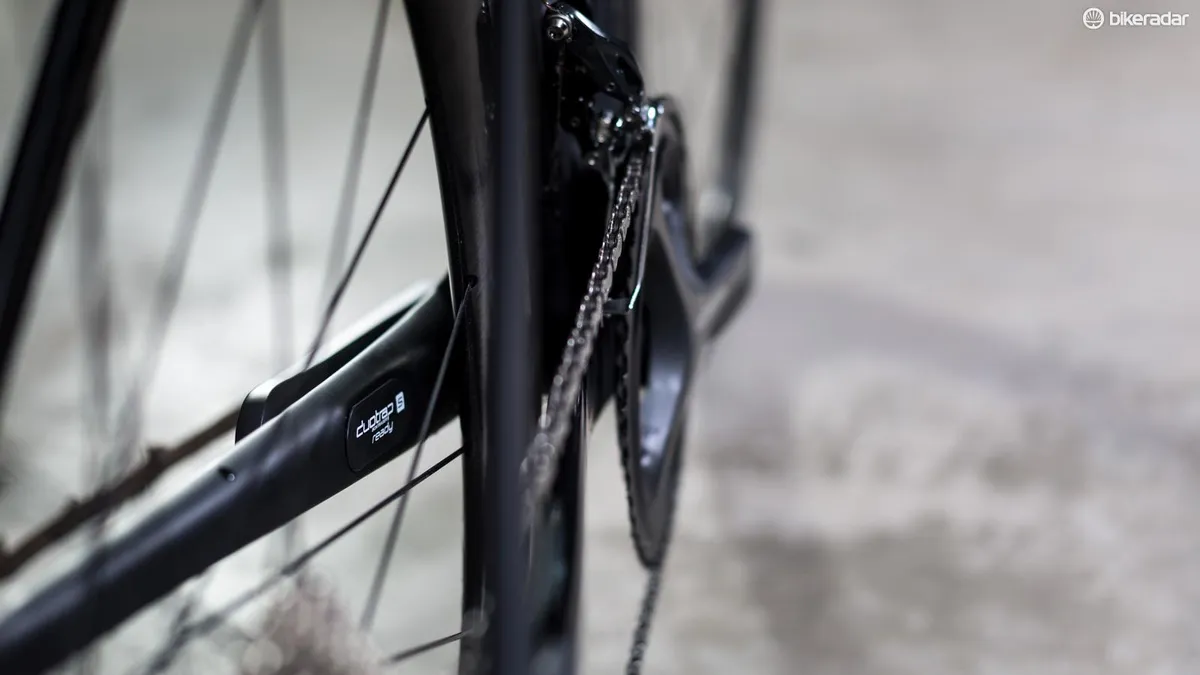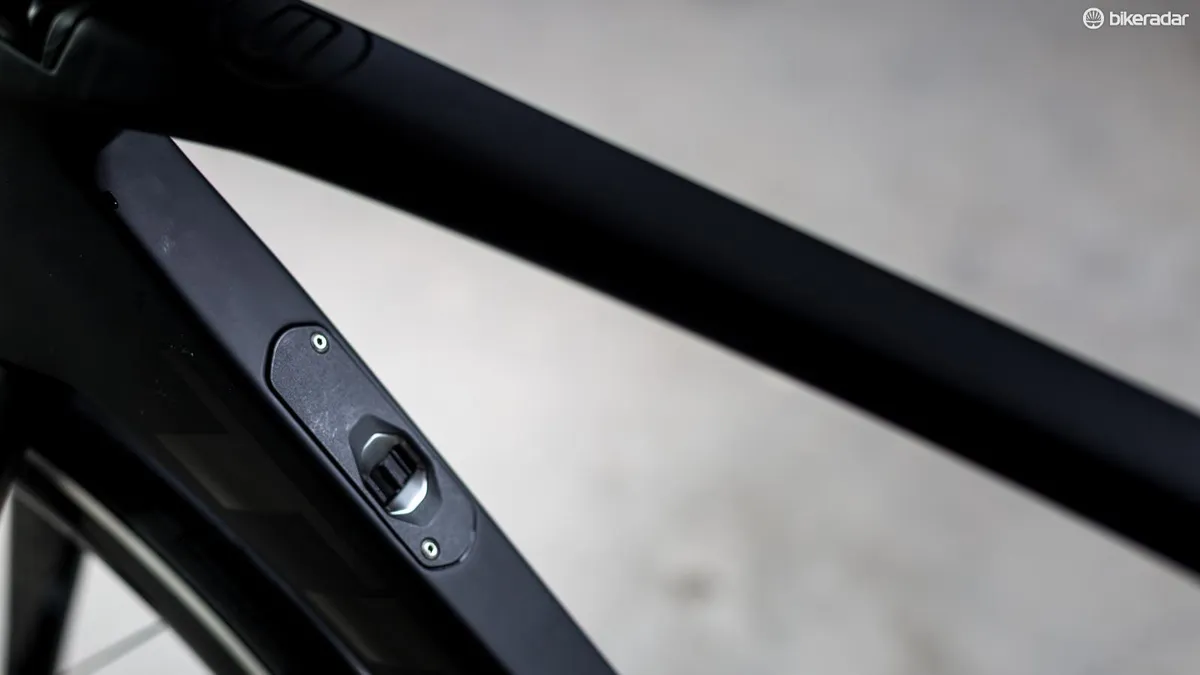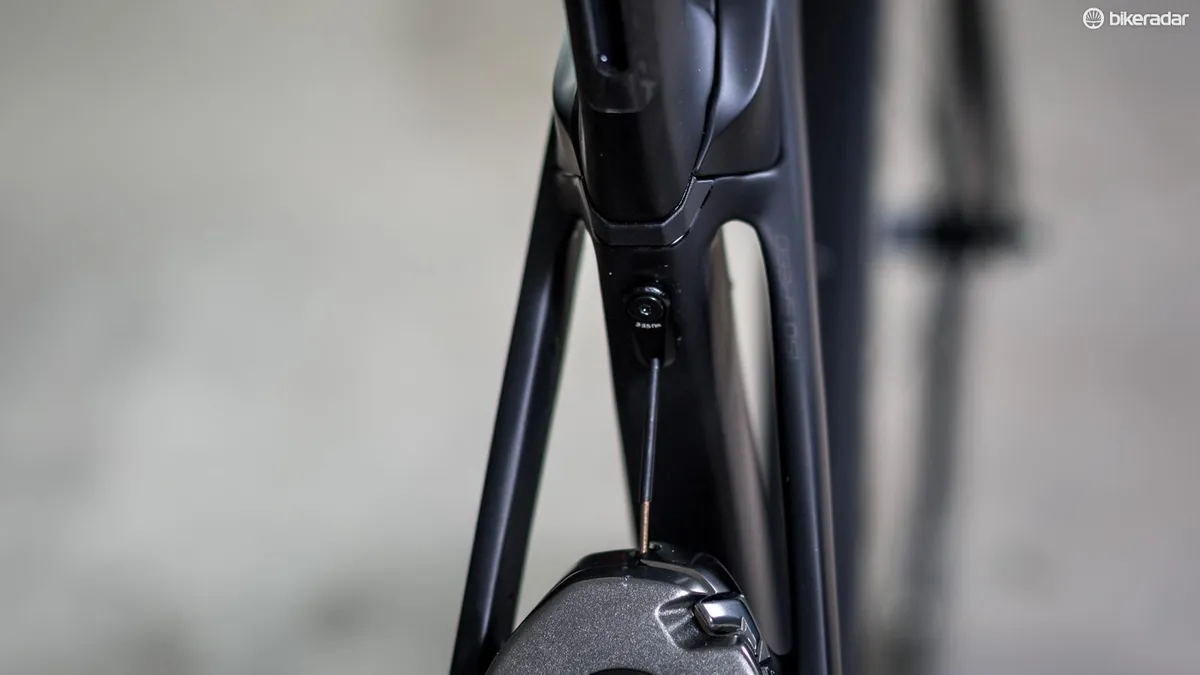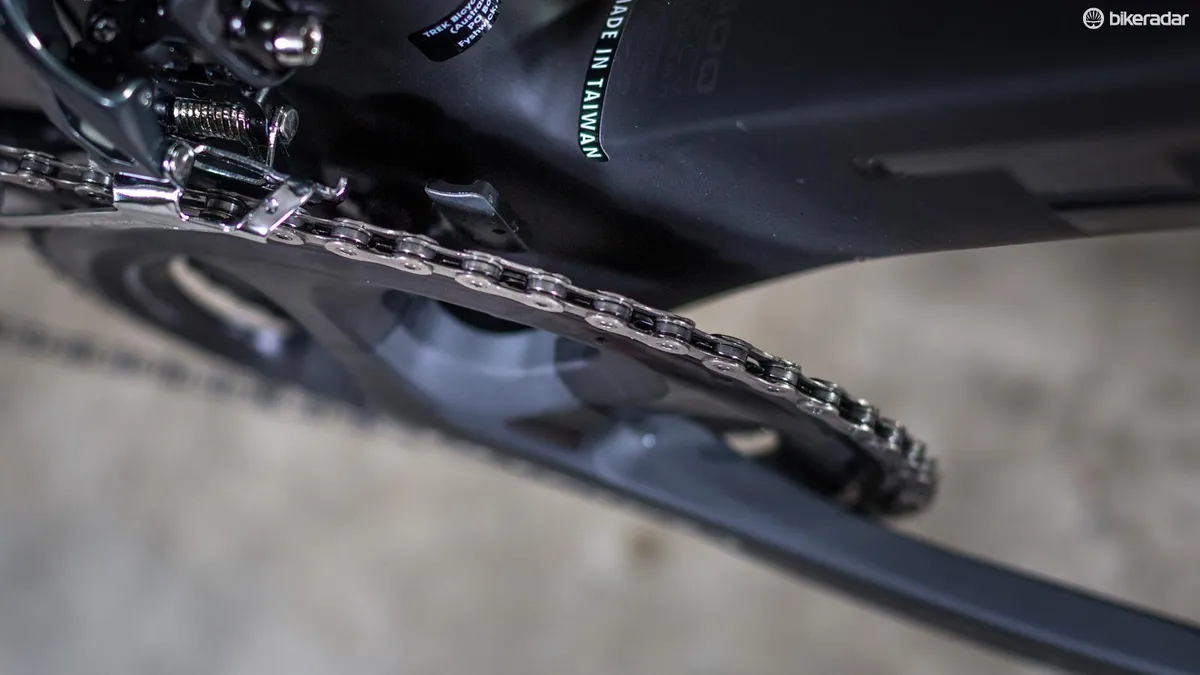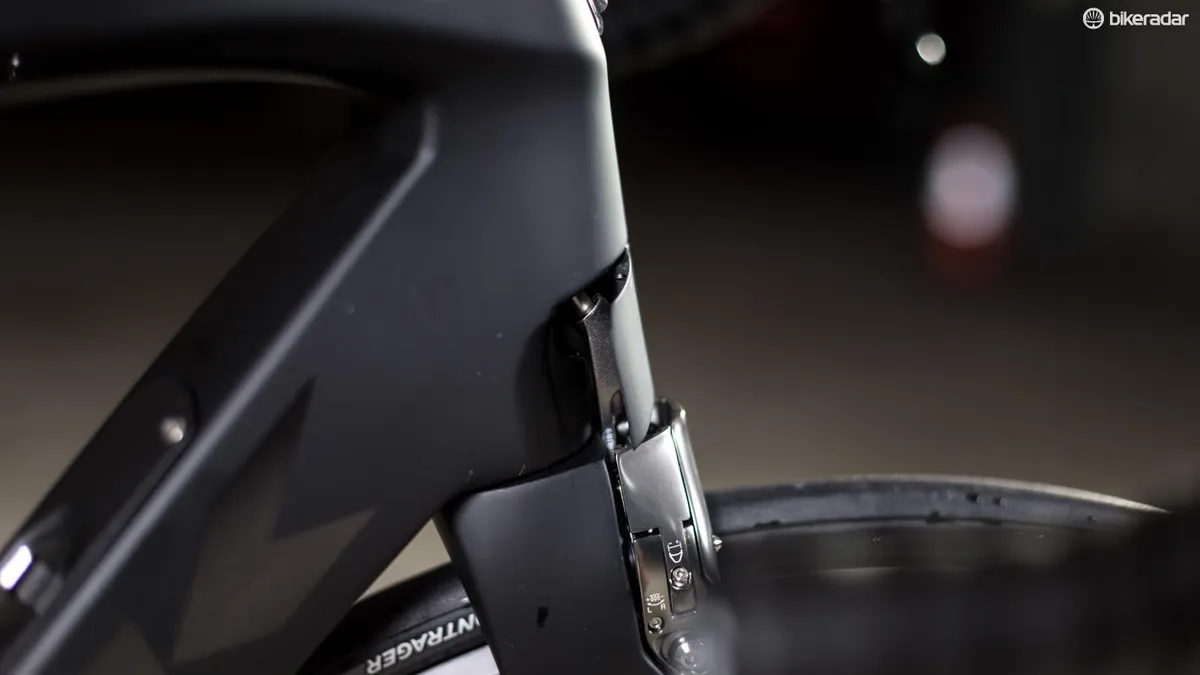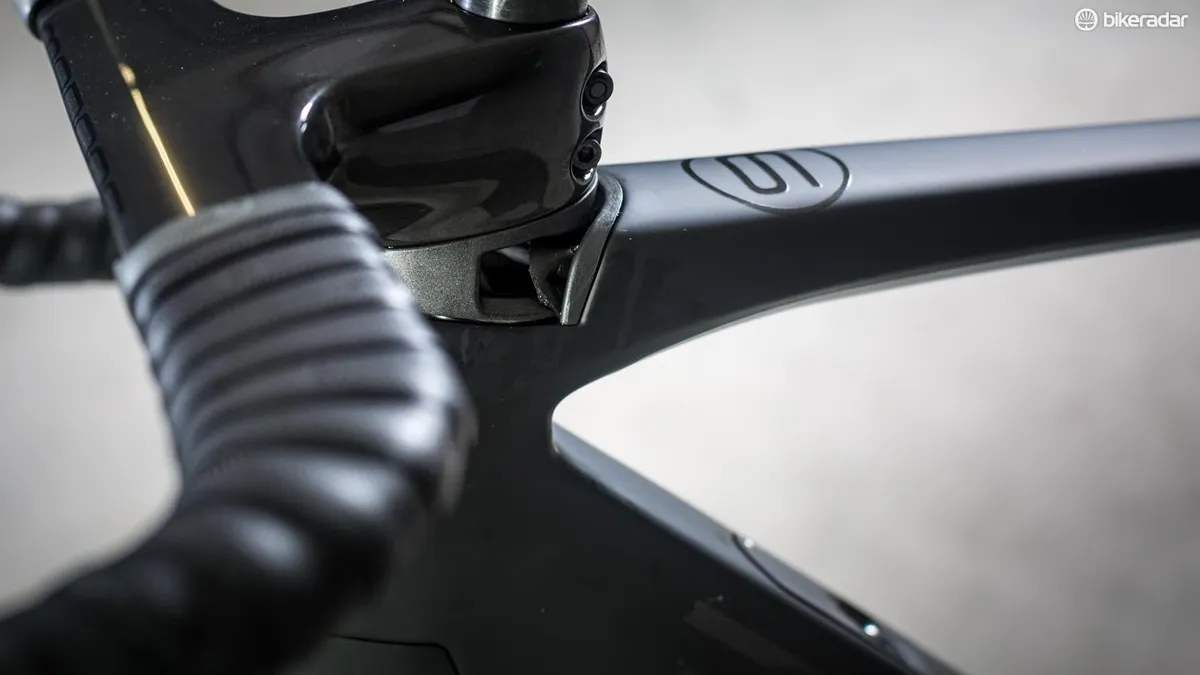Trek's Madone underwent a massive redesign to bring it up to date, and finally it looks every part the aero racer. The elongated tube shapes and integrated components have all been designed to minimize drag. But most noticeable is the addition of the IsoSpeed decoupler.
In recent months Trek has made waves in the bike industry with their IsoSpeed decoupler, now adding it to the front and rear of the endurance oriented Domane for ultimate all day comfort in the saddle.
- Trek Madone Project One Race Shop Limited review
- Trek Madone 9 Series first ride review
- Six slippery aero road bikes, put to the test
Even still, on both our first ride and full reviews of the flagship Race Shop and Project 1 Madone we've been impressed at the amount of performance and comfort on tap. The trouble is, the top-end Madone Race Shop Limited costs an eye watering £9,750 / $13,000 / AU$16,000! That’s a tall glass of water, but it’s what you’ll need for Trek's race proven H1 Geometry, a Dura Ace Di2 build and Bontrager Aeolus carbon wheels.
But, for less than half the price you have can have the Madone 9.2. You don’t get the aggressive H1 geometry, or the top grade OCLV carbon, but you do get all of the new industry leading features that make up the backbone of the new Madone.
It's like the Lazy Boy of race bikes
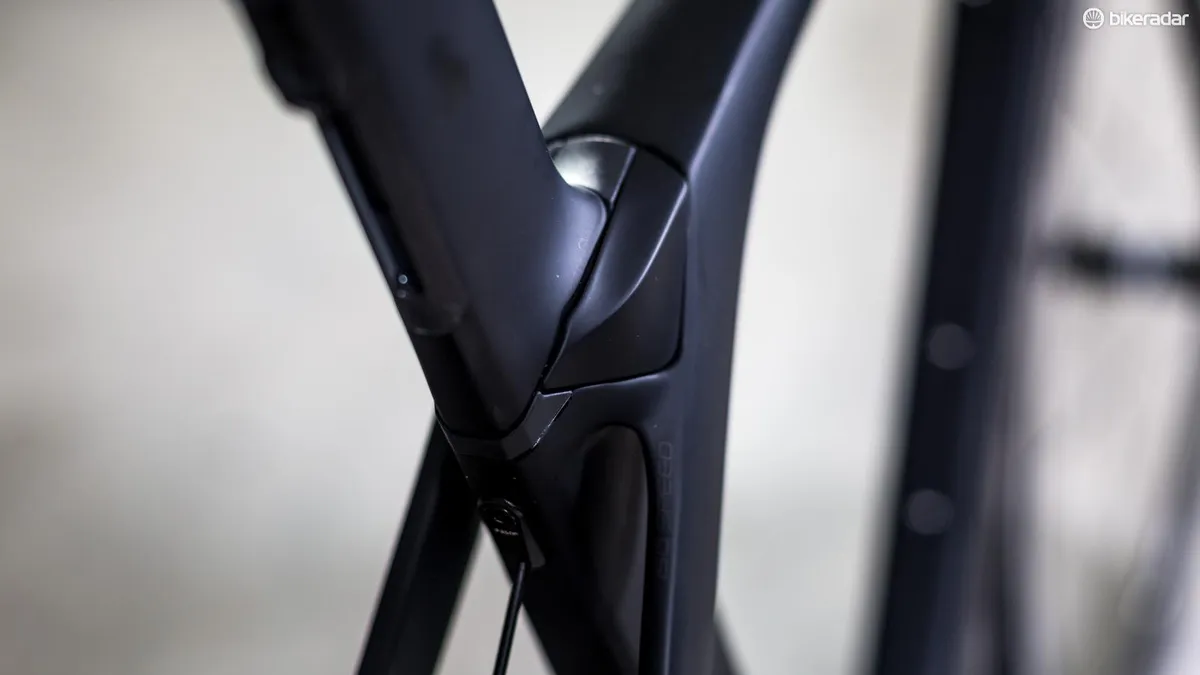
The most talked about feature of the new Madone is the addition of the IsoSpeed decoupler, a mechanical pivot at the top-tube seat tube junction that allows it to flex and absorb road vibrations coming up through your rear end.
As aero tubing isn’t particularly prone to flex, Trek has instead opted for a ‘tube inside another tube design’, basically there’s a round tube inside the aero seat tube. The inner round tube provides noticeable vertical compliance without sacrificing the overall rigidity of the frame.
When the Madone was first delivered there was an area of road work just outside my house. They’d just ground off the top layer of pavement leaving a pavé-esque rutted layer of asphalt as the road surface, the perfect inaugural testing ground for the Madone. Hitting the rough patch with some speed I let out an audible "Wow".
A section of road which, just the day before aboard my personal BMC Teammachine SLR01, rattled my bones was now buttery smooth. Of course, wanting to see how much the fancy seatpost could handle I began aiming for manhole covers, potholes, big cracks, and all the other stuff you’ll usually do anything to avoid. It’s absolutely remarkable the way the mechanical pivot handles road vibrations and takes the square edge off of big hits.

While new Madone isn’t as comfy as some of its endurance oriented cousins, it is a race bike after all, so the additional feedback and road-feel is a good thing, and it's not just comfortable for an aero road bike, it is a comfortable road bike, period.
Another surprise was the balance, with the Madone not falling into the same smooth at the back/harsh at the front pitfall as the original Domane. The combo of the beefy fork legs, which have been shaped to cheat the wind, and integrated handlebar and stem do a great job of keeping the your hands comfortable for hours. That said, those with small mitts may find the wide flat tops of the bars too wide to achieve a comfortable grip.
Credit where credit is due, the comfortable ride quality is also largely due, in part, to the Bontrager R3 Hard-Case Lite rubber. The 25c casing is very supple, rolls well and proved surprisingly puncture resistant despite a few dicey riding situations.
Handling as you’d expect on a race bike is precise with little input required to initiate cornering or make small line adjustments. Despite the light cornering action, the Madone’s character isn't nervous or finicky on the road. Especially at high speed the Madone is confident and it almost feels like the IsoSpeed decoupler flexes throughout the bend, pushing the tires into the ground for miles of grip.
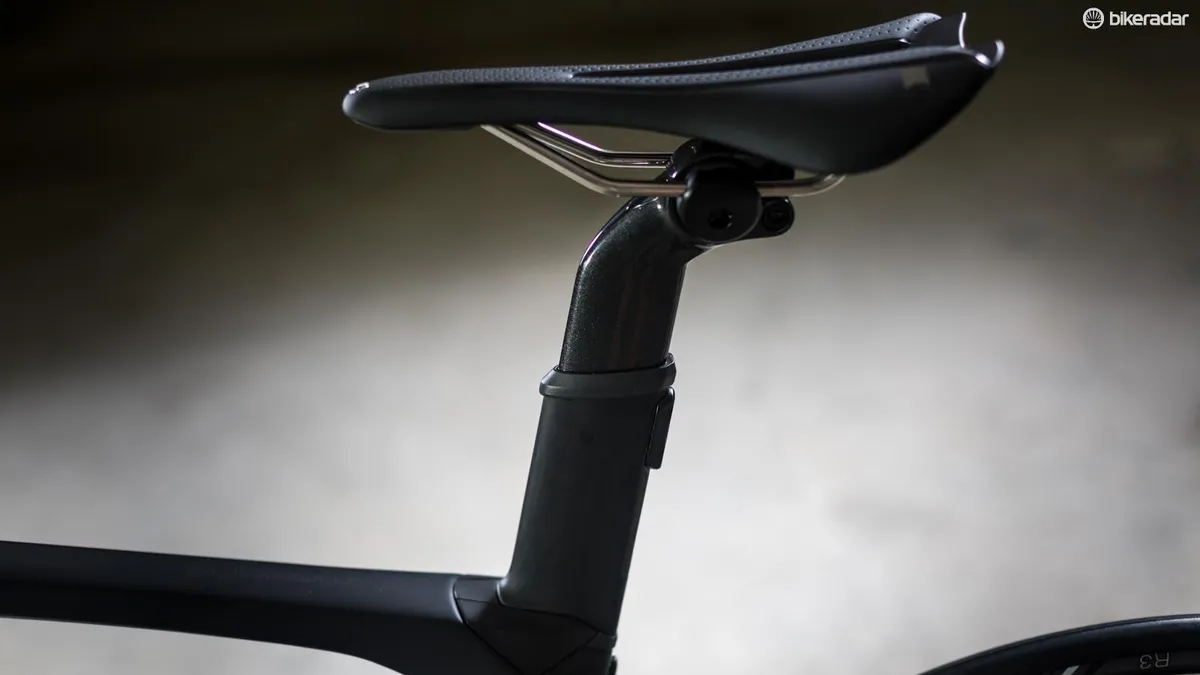
Overall the new Madone isn't lightweight with the 9.2 build tipping our scales at 7.55kg/16.64lbs. With that said, even the top-end build weighs just 6.8kg, and considering there's essentially two seat tubes, it's actually a relativity impressive figure.
The integrated cockpit looks great, and is respectably lightweight, but there is the slightest flex when you’re really wrenching on the bars. It’s not a huge amount of deflection, but it’s noticeable especially when wrenching on the bars on a steep climb — and we think it may be even more apparent to larger riders or sprinters.
Occupying the aero category of Trek's offerings the new Madone comes with wind tunnel numbers that are designed to wow you into buying one. We haven’t had a chance to properly test these aero claims against their big competitors, but we can say there’s definitely some wind cheating on tap.
It’s not something you’ll notice outright, but the combination of deep section wheels, aero tubing, and hidden cables contribute to the numbers you’ll see on your head unit cruising into a headwind with relative ease.
It’s not just straight line speed where the Trek exhibits exemplary drag figures, in strong coastal, offshore cross winds the Madone was remarkably well behaved. The bike did succumb to some side-to-side buffeting, but even strong gusts didn’t have me fearing for my life as some aero setups do in strong cross winds.
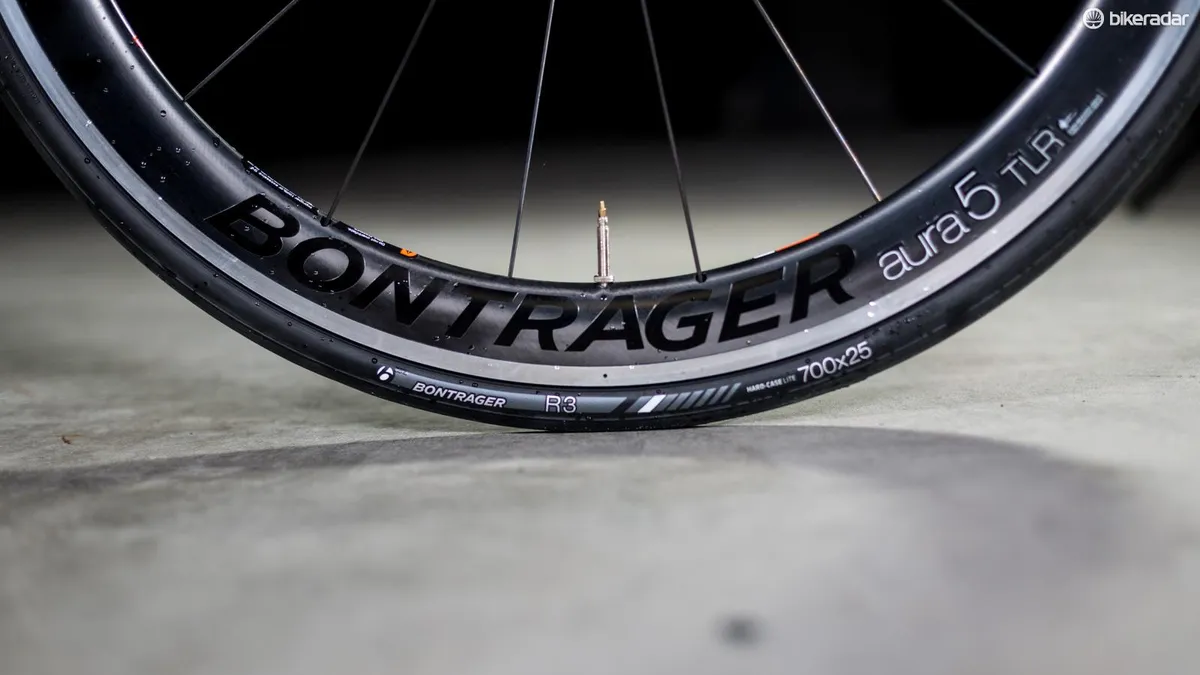
While there’s plenty of top-end speed available, the Madone 9.2 lacks the snap we’ve come to expect from a race bike and the Aura 5 TLR wheelset is to blame. While they give the appearance of a race-ready carbon wheelset, in fact they are an alloy rim with a flexible carbon fairing.
Again there’s some aero gains here, but the wheels aren’t light (1,780g for the set) nor are they particularly stiff, and with the fairing blocking easy access to the spoke nipples, maintenance will be a bear. They also mean the bike cannot be stored on a hook, and ratchet straps on roof racks are also potentially damaging. That said, they are tubeless ready (with rim strips and valves) and you get the advantage of an alloy brake surface. If we’re honest we’d rather see a set of lighter weight alloy clinchers sans fairing that occupy the same price point.
All of the new Madones, except for the top of the range Race Shop Limited version, see the slightly more relaxed H2 geometry. With this you get a little bit taller headtube, a bit more stack, and a bit less reach, but an identical trail figure, wheelbase and seat angle — meaning their ride characteristics should be very similar and there’s no need to be a master yogi to find a comfortable position. However, being accustomed to a long a low position, even with no spacers below the below the handlebar stem combo, I couldn’t get quite low enough.
On most bikes this problem could likely be solved by flipping the stem, but that’s not possible with the integrated cockpit, though Trek is offering the Madone XXX Integrated Bar/Stem with different stem lengths and bar widths.
Integration overkill

Despite our complaints, Trek’s clever two-piece spacers mean that handlebar height can be adjusted without needing to re-cable the entire bike. With the bars not being a standard round shape, Trek has also come up with a clever solution for accessories, using a GoPro style interface to allow computer cameras and lights to be used while still keeping a clean and tidy cockpit.
Madone is one of a growing handful of bikes that sees fully hidden wires and cables. Obviously not having cables exposed to the wind eliminates any potential drag and massively cleans up the overall aesthetic of the bike — there’s even a spring-loaded winged cover to hide the front brake cable. But, it also amplifies the headache that is internally routed cables. I had the pleasure of putting together the Madone 9.2 and even with the cables and housing already routed through the bars, just about every combination of expletives were directed at the Madone trying to get cables where they needed to be. The thought of changing cables and housing sends a shudder down my spine.
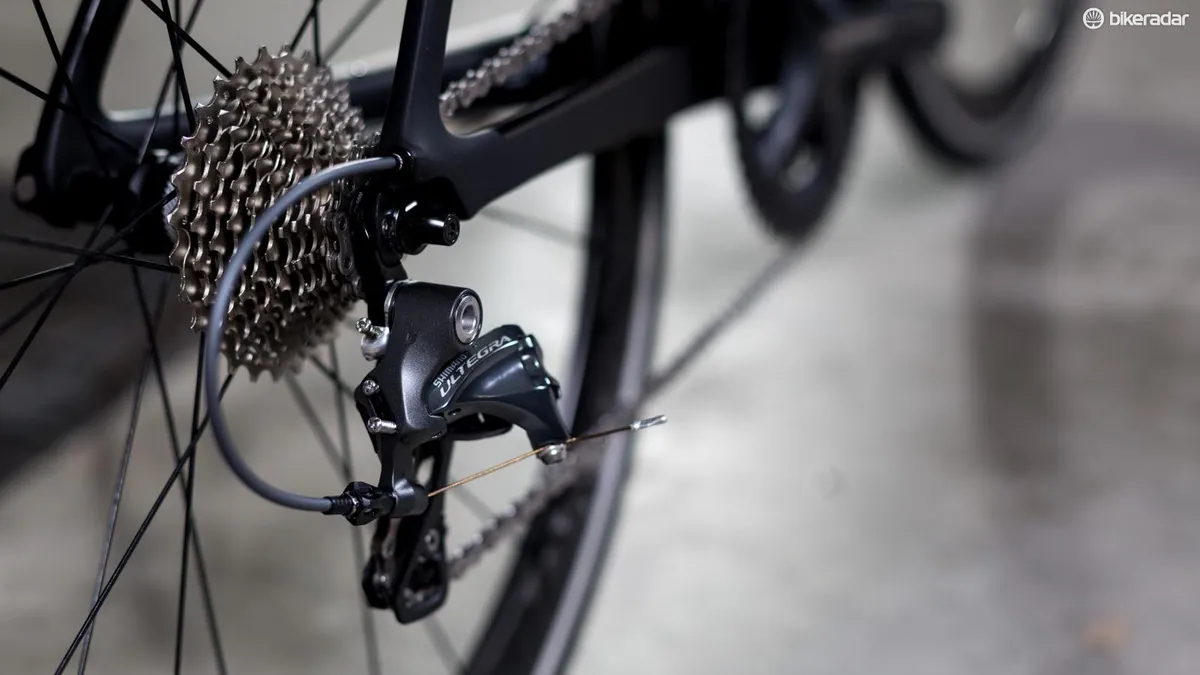
Sitting at the bottom of the new range of Madones the 9.2 still gives you a full Ultegra groupset, carbon bars and seatpost, and deep section wheels. Ultegra mechanical is the absolute workhorse of Shimano’s lineup, offering modest weight and fantastic and reliable shifting performance and it works when it's dirty, bent and broken, still providing crisp accurate shifting.
Given the Madone's aero prowess, the compact 50/34 chainrings were somewhat of a surprise in lieu of a semi compact crank, but combined with an 11-28t cassette at the back there is plenty of low-end gearing to get you up even the steepest grade.
Among the rest of the proprietary finishing kit are the centre pull brakes, which are fantastic. Calliper flex is a non issue and there’s plenty of power with the TRP pads offering heaps of feel. You don’t get a barrel adjuster (there’s not an exposed cable available to facilitate one), but they do offer individual pad adjustment and even a quick release to accommodate bulbous rubber.
Our test Madone 9.2 came with Bontrager's Paradigm RL saddle, and the Titanium railed perch with a pressure relieving cut-out agreed with our tester's rear end though long days and rough roads.
Final thoughts
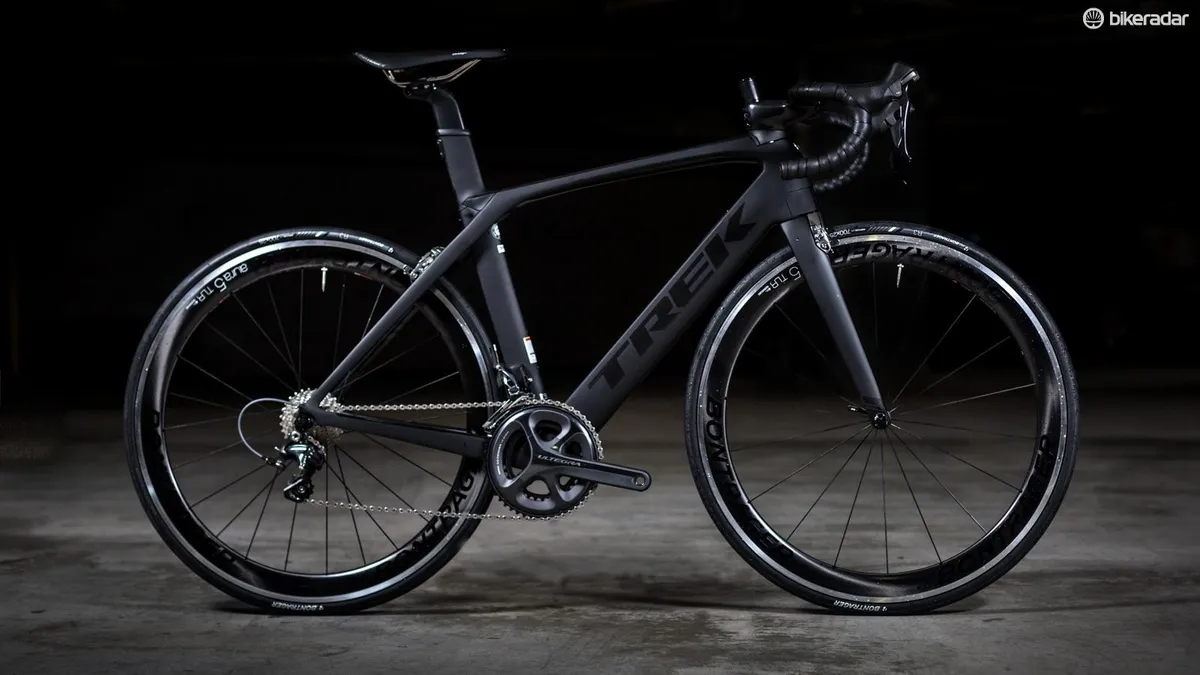
Trek's new Madone is awesome, and a bike I’ve really enjoyed riding over the past few months. The IsoSpeed decoupler is truly an amazing piece of technology, and we’re stoked to see it being adopted in the American outfit's stable of racing bikes (fingers crossed the Emonda is next). Essentially having two seat tubes, there’s a small weight penalty but we’d say it's worth every gram for the affect it has on ride quality.
Being quite dubious of aero claims, I can say that Trek has nailed it with the latest iteration of the Madone. It’s a bike that looks great and performs even better.
Despite all of the positives, we can’t look past the headache that fully hidden cables are sure to create for home mechanics and bike shops alike. To us, on a bike like the Madone, an electronic group makes sense and there is an Ultegra Di2 version available for the Madone 9.5 in either a Dura-Ace R9100 build or Ultegra Di2 for the same price.
Even still, the Madone 9.2 offers cutting-edge technology, carbon finishing kit and decent wheels at an attainable price.

